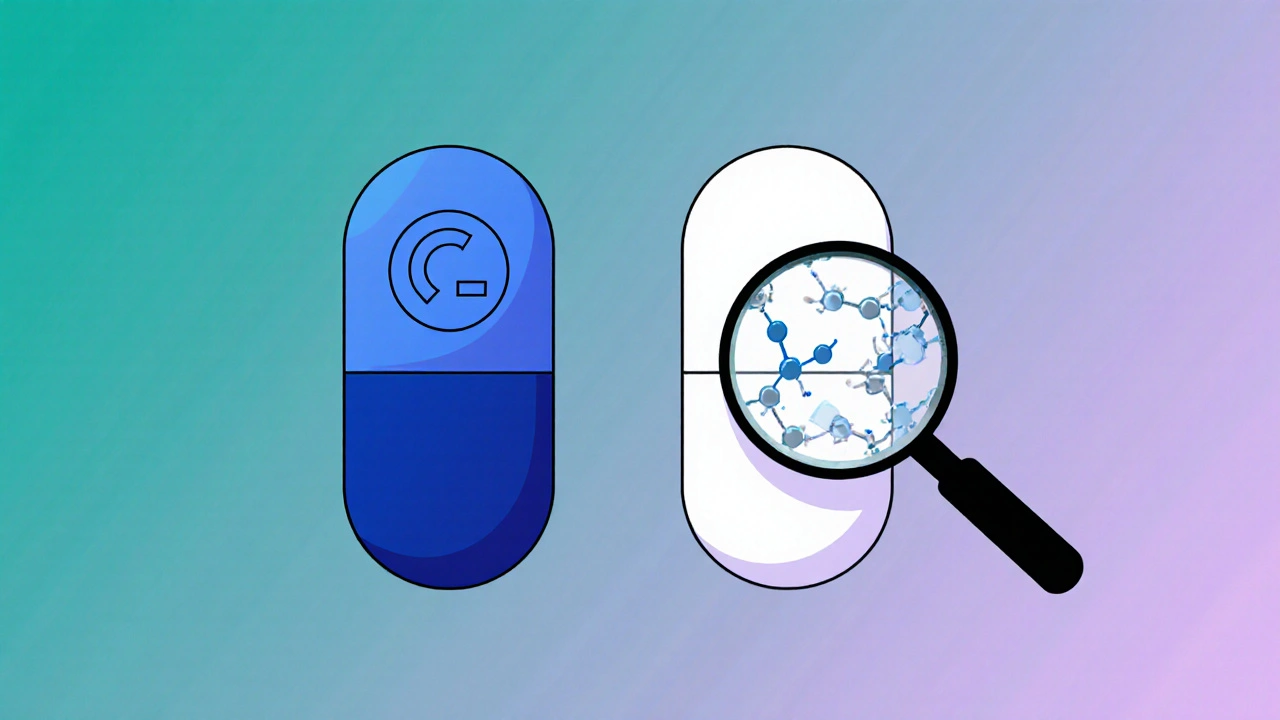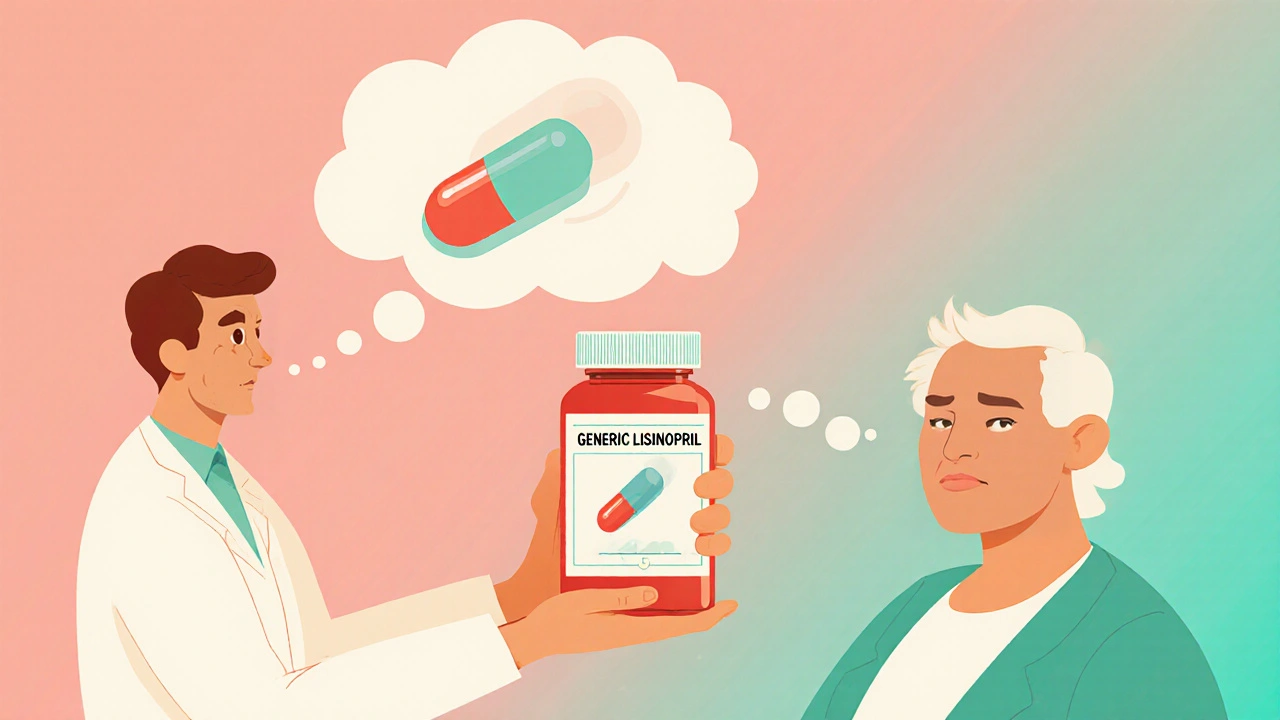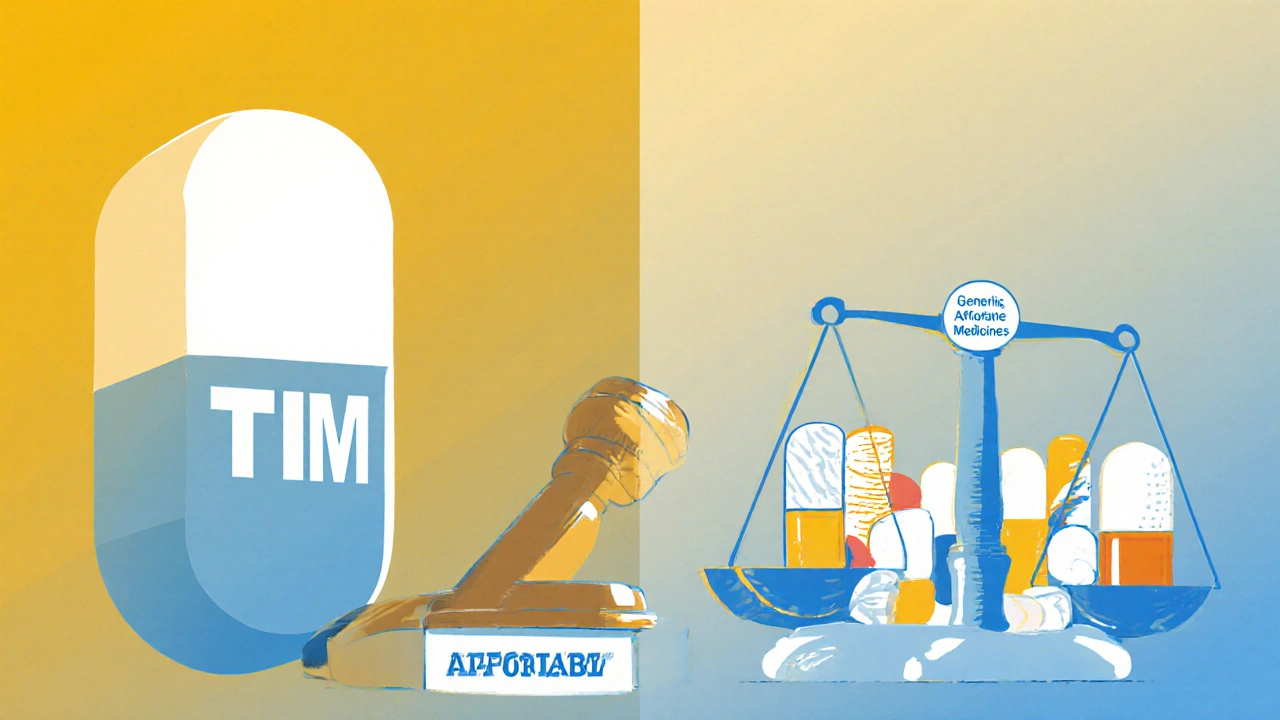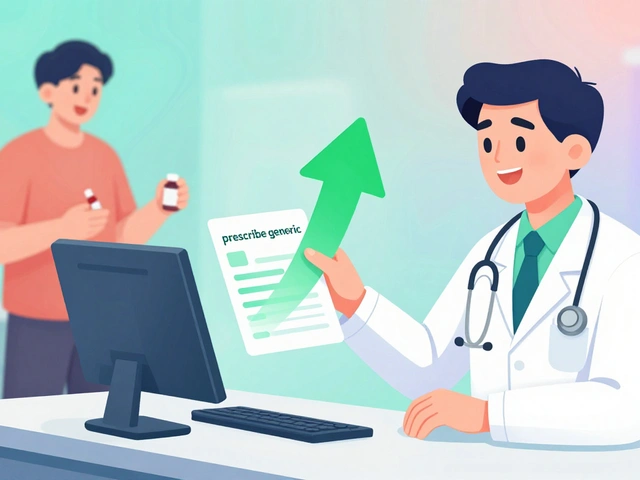Why Generic Drugs Look Different: How Trademark Laws Shape Medication Appearance

Have you ever picked up your prescription and thought, "This isn’t the same pill I got last month"? Maybe it’s a different color, shape, or size. You’re not imagining it. And it’s not a mistake. That change is required by law.
Generic drugs aren’t supposed to look like brand-name ones
In the U.S., trademark laws don’t let generic drugmakers copy the exact look of brand-name pills. That means even if the medicine inside is identical, the outside - the color, shape, size, and even the markings - must be different. This isn’t about quality. It’s about legal boundaries.
The U.S. Food and Drug Administration (FDA) makes this clear: generic drugs must have the same active ingredient, strength, dosage form, and how they work in your body. But they can’t look exactly like the brand-name version. Why? Because trademark law protects the visual identity of a product. Think of it like sneakers. Nike can’t let another company make a shoe that looks just like the Air Jordan. Same idea with pills.
Brand-name companies spend millions designing their pills to be recognizable. That distinctive blue oval or red capsule isn’t just for style - it’s part of their brand. Trademark law gives them exclusive rights to that look. Once a patent expires, other companies can make the same medicine, but they can’t copy the appearance. So they create their own version - same effect, different look.
What parts of the pill actually change?
The only things that change are the inactive ingredients - the stuff that doesn’t treat your condition. These include:
- Colorants (dyes that make pills red, blue, or white)
- Fillers (like lactose or cellulose that give the pill bulk)
- Binders (what holds the pill together)
- Flavorings (especially for chewable or liquid versions)
- Shape and size (round, oval, capsule, scored, etc.)
The active ingredient - the part that actually works - stays exactly the same. A generic lisinopril tablet has the same amount of lisinopril as the brand-name version. Same for metformin, atorvastatin, or sertraline. The FDA requires generic manufacturers to prove this through rigorous testing.
Studies show the difference in how your body absorbs the drug is tiny - on average, just 3.5%. The FDA’s acceptable range for bioequivalence is 80% to 125%. That means generics are just as effective. If your blood pressure drops with the brand, it’ll drop just as much with the generic. Same for cholesterol, diabetes, or depression meds.
Why does this system exist?
This rule wasn’t created to confuse patients. It was created to balance two competing goals:
- Let new companies make cheaper versions of drugs after patents expire
- Protect the brand identity of the original manufacturer
Before the 1984 Hatch-Waxman Act, generic drugs were rare. Companies couldn’t enter the market easily because they had to prove safety and effectiveness from scratch. The law changed that. It allowed generics to rely on the brand’s existing data - as long as they proved they delivered the same active ingredient in the same way.
But trademark law was already in place. So the FDA had to find a way to let generics in without letting them copy the brand’s visual identity. The solution? Make them look different - but work the same.
Today, about 90% of prescriptions in the U.S. are filled with generics. Yet they make up only 23% of total drug spending. That’s because they cost 80% to 85% less. Without this legal framework, those savings wouldn’t exist. Millions of people rely on generics to afford their meds. If generics had to look identical to brands, many wouldn’t be allowed on the market at all.

Can the difference cause problems?
Yes - but not because the medicine is less effective. The problem is confusion.
Patients who take multiple pills every day often recognize their meds by how they look. When a refill comes in a different color or shape, it can trigger anxiety: "Did I get the wrong drug? Is this a mistake?"
Some people stop taking their meds because they think the new pill isn’t real. Others mix up pills because they assume a different-looking tablet is something else. That’s why pharmacies now put clear labels on bottles saying: "This is a generic version of [brand name]." Some even include a photo of the pill on the label.
Pharmacists are trained to warn you about appearance changes. But not everyone gets that warning. A 2023 survey by UMass Memorial Health found that nearly 40% of patients didn’t realize the change was normal. That’s why it’s important to ask your pharmacist when your pill looks different.
What’s being done to reduce confusion?
The FDA has started encouraging generic manufacturers to make their pills as close as possible in size and shape to the brand version - while still staying legally distinct. For example, if the brand is a small white oval, the generic might be a slightly larger white oval with a different marking.
This is a shift from the old approach, where generics sometimes looked wildly different - bright green capsules for blood pressure pills, for example. Now, the goal is to reduce surprise without breaking trademark rules.
Some companies are even working with the FDA to create standardized pill designs for common drugs. Think of it like a universal pill template: all generic metformin 500mg tablets look similar across brands, so patients learn to recognize the pattern.

What should you do if your pill looks different?
Don’t panic. Don’t stop taking it. Do this:
- Check the label. It should say the name of the generic drug and the brand it copies.
- Look at the pharmacy’s sticker or insert. It often explains the change.
- Call your pharmacist. Ask: "Is this the same medicine I was taking before?" They’ll confirm it’s the same active ingredient.
- Don’t assume a different look means a different drug. It’s almost always just the generic version from a different maker.
If you’re still unsure, your doctor can check the prescription and confirm it’s correct. Most doctors know generics look different - they’ve seen it happen hundreds of times.
The bottom line
Generic drugs are safe, effective, and legal. Their different appearance isn’t a flaw - it’s a feature of how the system works. Trademark laws protect brands, but they don’t protect effectiveness. Your health doesn’t depend on the color of the pill. It depends on the active ingredient - and that’s identical.
By choosing generics, you save money without sacrificing results. In fact, studies show patients who use generics are more likely to stick with their treatment because they can afford it.
So next time your pill looks different, remember: it’s not broken. It’s just following the rules. And those rules are designed to keep you healthy - and your wallet full.
Why do generic drugs look different from brand-name drugs?
U.S. trademark laws prevent generic drugmakers from copying the exact appearance of brand-name pills. This includes color, shape, size, and markings. While the active ingredient is identical, the inactive ingredients - like dyes and fillers - are changed to create a distinct look. This protects the brand’s intellectual property while allowing cheaper alternatives to enter the market.
Are generic drugs less effective because they look different?
No. Generic drugs must meet the same FDA standards as brand-name drugs for strength, purity, quality, and how they work in the body. Studies show the difference in how your body absorbs the drug is only about 3.5%, well within the FDA’s acceptable range of 80% to 125%. The look doesn’t affect how well the medicine works.
Can changing the appearance of my pill cause medication errors?
Yes, it can - but not because the drug is different. If you’re used to taking a white oval pill and suddenly get a blue round one, you might think it’s the wrong medicine. This is why pharmacies now label bottles clearly and often include a photo of the pill. Always check the label and ask your pharmacist if you’re unsure.
Why doesn’t the FDA require generics to look the same as brand-name drugs?
Because trademark law gives the original manufacturer exclusive rights to the pill’s appearance. If generics could copy the look, they’d be infringing on that legal protection. The FDA balances this by allowing generics to be identical in function but different in appearance - ensuring competition and lower prices without violating intellectual property rights.
Do all countries have the same rules about generic drug appearance?
No. The U.S. is one of the few countries with strict trademark-based appearance rules for generics. In many other countries, including Canada and the UK, generics can look identical to brand-name drugs. The U.S. system is unique because of its strong trademark protections and the legal framework established after the 1984 Hatch-Waxman Act.
How can I tell if my generic drug is safe if it looks different?
Look at the label. It must list the generic name and the brand it copies. You can also check the National Library of Medicine’s DailyMed database online to see what the pill should look like. Most pharmacies also provide printed images of pills. If you’re still unsure, call your pharmacist - they can confirm the drug is FDA-approved and safe.



Bruce Bain
I used to freak out every time my pills changed color. Thought I got scammed. Then my pharmacist showed me the label and explained it’s all legal. Now I just check the name and move on. Saved me hundreds a year.
Don Angel
Okay, but can we just talk about how ridiculous it is that a blue oval pill is somehow ‘trademarked’? Like, it’s medicine, not a sneaker. And yet, we’re stuck with this whole ‘look different but work the same’ circus. It’s bureaucratic theater, and it confuses elderly patients the most. . . . Seriously, if your pill looks different, call your pharmacist. Don’t just stop taking it. . . . Please.
benedict nwokedi
Let’s be real here - this isn’t about trademark law. This is about Big Pharma keeping the illusion alive. They don’t want you to realize that the $200 brand pill and the $4 generic are literally the same chemical. The color change? A psychological trick to make you think the cheap one is ‘inferior.’ And the FDA? They’re in bed with the manufacturers. You think they’d allow generics to look identical? Nah. That’d expose the whole scam. . . . They’re manipulating your perception to keep profits high. . . . I’ve seen the patents. The inactive ingredients? Often worse. Fillers from questionable sources. You’re not just paying for the brand - you’re paying for the placebo effect. . . . And now they’re pushing ‘standardized’ shapes? That’s just the next phase of control. . . . Wake up.
deepak kumar
From India, where generics look exactly like brand pills - and it works fine. No one panics. No one thinks they got the wrong medicine. The system here is simple: same look, same active ingredient, way cheaper. People take their meds. No confusion. No fear. Maybe the US should learn from countries that prioritize access over aesthetics. . . . Also, if your pill changes color, just Google the name + ‘pill identifier’ - you’ll see it’s normal. Easy.
Dave Pritchard
Biggest thing I tell my patients: the color doesn’t cure you. The chemical does. If you’re worried, hold the bottle up to the light and read the name - it’s printed right there. No magic, no trick. Just science and law. And if you’re still unsure? Ask. Always ask. Pharmacists are your allies, not gatekeepers. . . . You’re not alone in feeling confused. But you’re not in danger. Just take the pill.
kim pu
Y’all are so naive. This isn’t about trademarks - it’s about brand loyalty laundering. They make the generic look like a knockoff so you’ll feel guilty taking it. Like you’re settling. Like it’s ‘bad.’ And then they slap on a sticker that says ‘same as [brand]’ like that fixes everything. . . . Meanwhile, the fillers? Totally different. Some generics use gluten, corn, or artificial dyes that trigger my migraines. But hey - it’s ‘bioequivalent’ so who cares? . . . I’m not a lab rat. I want the same damn pill. . . . And don’t even get me started on how the FDA ‘approves’ these things without testing long-term side effects of new filler combos. . . . #PharmaLies
malik recoba
i used to get so scared when my pills changed… like, i’d think i got the wrong med or something was wrong with me. then i learned to check the name on the bottle and call the pharmacy. they’re always super nice and explain it. now i don’t stress. also, generics saved my dad’s life - he couldn’t afford the brand. so… yeah. different color, same help. :)
Sarbjit Singh
Bro, in India we got generics that look exactly like the brand. No drama. No panic. Just medicine. 😊 And guess what? People take them. No one dies. No one gets confused. Maybe US should chill and focus on making meds affordable instead of worrying about pill shapes. 🙏
Angela J
What if the color change is a secret way to track who’s taking what? I mean… think about it. The FDA, the pharmacies, the drug companies - they all know exactly which generic you got. And now they can monitor your adherence. Isn’t that creepy? They’re not just changing the pill… they’re changing your life. . . . I’ve seen documentaries. They’re watching us. . . . I switched to herbal supplements. Better for my soul. 🌿
Sameer Tawde
Generic = same active ingredient. Period. The rest is just packaging. If you’re confused, ask your pharmacist - they’re trained for this. Save money. Stay healthy. Simple.
Bruce Bain
Wait, so if generics can’t copy the look, why do some look almost identical? Like, my metformin is a tiny white oval now - same as the brand. Is that legal? Or is the FDA just letting it slide now?